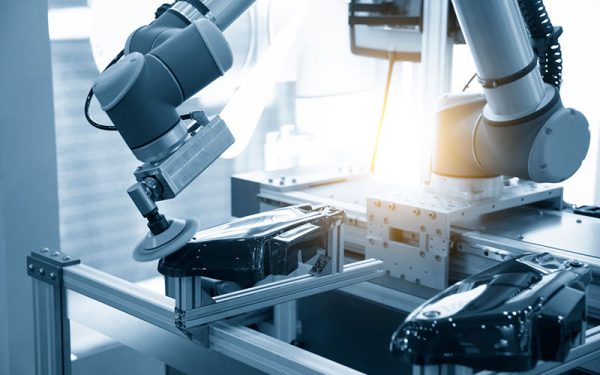The Art and Science of Finishing
Surface finishing is a critical but often underestimated part of manufacturing. Whether it’s achieving a flawless cosmetic surface, preparing a part for coating, or removing small imperfections, polishing is essential for both function and appearance. Robotic polishing systems bring consistency, precision, and efficiency to this labour-intensive process enabling manufacturers to meet high standards while reducing manual effort.
What Is Robotic Polishing?
Robotic polishing involves using an industrial robot equipped with polishing tools and sensors to automate the surface finishing of materials like metal, plastic, composite, or stone. These systems are designed to replicate skilled manual polishing, but with the consistency, repeatability, and control of automation.
A typical robotic polishing system includes:
- A 6-axis or SCARA robot
- End-of-arm tooling (abrasive pads, wheels, belts)
- Force control or compliance mechanisms
- Vision or laser sensors for surface mapping
- Integration with conveyors, jigs, or parts feeders
The robot follows programmed paths across the surface of a part, applying uniform pressure and motion to achieve the desired finish.

The Impact of Robotic Polishing in Industry
Replacing or supplementing manual polishing with robotic systems improves output quality, operator safety, and overall efficiency especially in industries where aesthetics and material performance are critical.
Consistent Surface Quality
Manual polishing can lead to variations in finish due to fatigue, technique, or inconsistency between workers. Robots eliminate these issues by following precise, repeatable paths under controlled conditions. This ensures every part meets the same quality standard whether it’s a brushed finish on stainless steel or a mirror polish on aluminium.
Higher Throughput
Robots can polish continuously without rest, fatigue, or slowdown. They can be programmed to switch between polishing steps, adjust pressure on the fly, and even perform multi-pass operations cutting down on cycle time. This leads to faster output, reduced bottlenecks, and shorter lead times.
Operator Safety and Ergonomics
Polishing tasks often expose workers to airborne particles, repetitive strain, noise, and physical fatigue. Robotic systems reduce this exposure by automating the most hazardous and tiring steps. Operators can be reallocated to supervision, quality control, or programming reducing injury risk while increasing job value.
Process Control and Feedback
Robots can be equipped with real-time force sensors, compliance units, or machine vision to adjust pressure and path in response to surface geometry. This makes them ideal for irregular or complex shapes like castings, moulded parts or curved surfaces. Integrated sensors also allow data logging for traceability and quality assurance.
Cost Reduction Over Time
While robotic polishing systems require up-front investment, they reduce long-term labour costs, scrap rates, and rework. This is especially valuable for high-volume production where small gains in speed and accuracy translate into significant cost savings.
Multi-Material Versatility
Robots can polish a wide range of materials including:
- Stainless steel and aluminium
- Plastic housings and enclosures
- Glass panels or optical components
- Fiberglass and carbon fiber composites
Tooling and programming can be tailored for each material type, ensuring optimal performance and surface integrity.
Real-World Applications
- Automotive: Polishing wheels, trim, exhaust tips, or body panels for visual appeal and corrosion resistance
- Consumer Products: Achieving high gloss finishes on kitchen appliances, faucets, and hardware
- Aerospace: Polishing turbine blades and composite surfaces to improve aerodynamic performance
- Medical Devices: Smoothing surgical instruments or implants to meet hygiene and surface finish standards
- Luxury Goods: Perfecting the polish on watches, electronics or designer hardware
These examples show the wide applicability of robotic polishing in industries where appearance and surface detail are integral to product quality.
Programming and Automation Flexibility
Robotic polishing routines can be taught manually using lead-through programming or developed in simulation software. Adjustments can be made for new part geometries, wear compensation or finishing sequences all without major hardware changes.
Offline programming tools also allow manufacturers to validate polishing paths in advance, ensuring minimal setup time and zero scrap during testing.
Robotic polishing offers manufacturers a precise, scalable, and safe way to achieve high-quality surface finishes. It combines the skill of traditional craftsmanship with the speed and reliability of automation creating smoother workflows and better products. As industries demand tighter tolerances and higher finish standards, robotic polishing is becoming an essential part of modern manufacturing.
